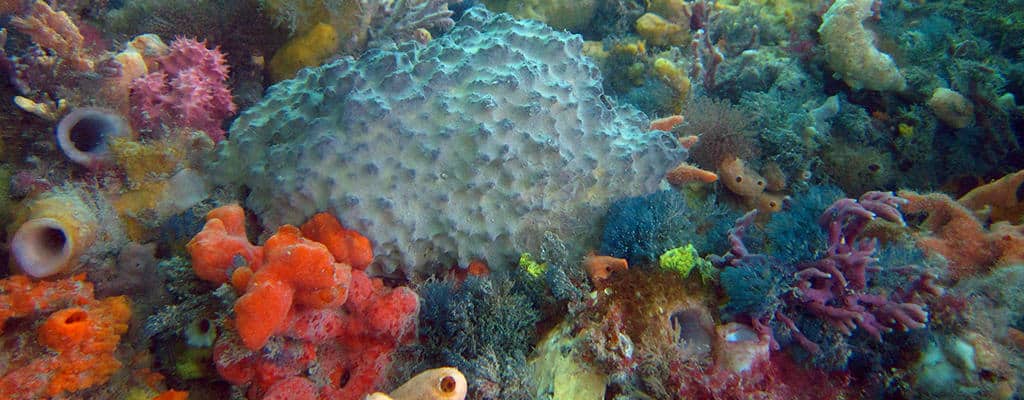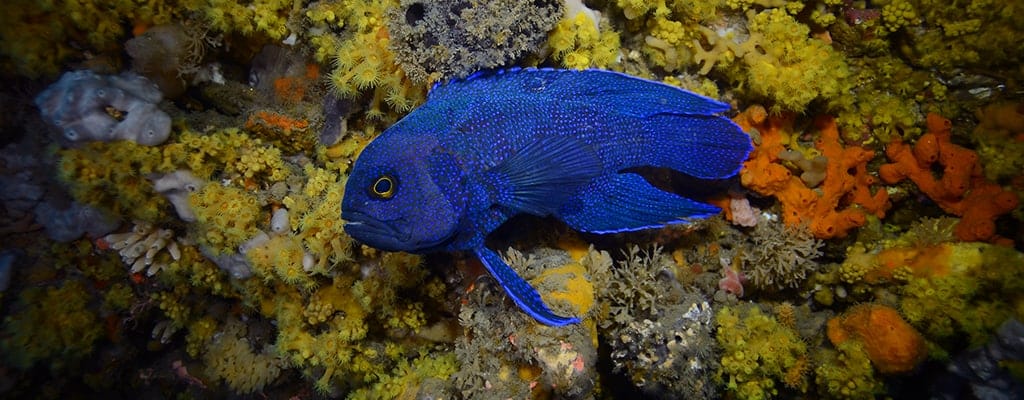Australia’s southern waters contain spectacular and diverse organisms which rival those of tropical reefs in colour and form, though most are not corals. Marine animal communities flourish under low light conditions on deep rocky reefs, caves, crevices, and the undersides of overhangs. Because not much sunlight penetrates to deepwater habitats, they lack the rich plant growth found on shallower reefs. Instead, these communities are dominated by a breathtaking array of free-swimming and permanently attached invertebrate animals. Vertical and overhanging rock walls are covered with delicate lacework bryozoans, soft branching corals, and long thin sea whips. Sponges large and small, in different shapes and colours are abundant in these sponge gardens.
About our sponge gardensDetails

Sponge gardens are most are commonly found in low light environments on reefs more than 20 metres deep, and on rubble in areas where currents aren’t very strong. These habitats are of great ecological significance and scientific value, and are favoured sites for divers and underwater photographers. Deep reefs and sponge gardens contain a great diversity of species, many of which are endemic (found nowhere else in the world). In many groups, for example ascidians and bryozoans, 80 to 90% of the species are endemic. Victoria’s sponge gardens are richer in species and have a greater proportion of endemic species than comparable habitats around the world.
Sponges, hydroids and anemones, sea pens, sea whips, tube-building worms, bryozoans, barnacles, ascidians and soft corals are the major groups of animals in sponge garden communities. These habitats flourish in shaded or deeper water as they are not dependent on sunlight as algae and seagrasses are. Sponges can have fundamental roles in ecosystem processes, including altering the texture of reef structures, stabilising boulder and rubble fields, substantially influencing nutrient cycling and energy flow, structuring benthic (sediment-dwelling) communities, and providing food and secondary production. The significance of these roles is not widely appreciated.
